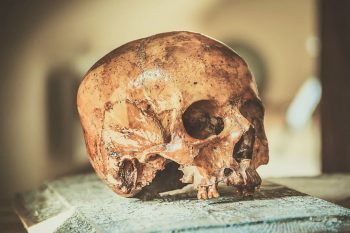What are vampires?
Vampires are mythical creatures often depicted as supernatural beings that feed on the blood of the living to maintain their immortality. The idea of vampires has been present in many cultures throughout history, and the specifics of the vampire myth vary depending on the cultural context.
In modern popular culture, vampires are often depicted as nocturnal, immortal beings with fangs and a thirst for human blood. They are frequently portrayed as having supernatural abilities, such as the power of mind control, super strength, and the ability to transform into a bat. In some stories, vampires are also depicted as being vulnerable to sunlight, garlic, and holy symbols, and as being unable to enter homes uninvited.
Many vampire myths have roots in real-world events and cultural beliefs. For example, the vampire’s association with death and disease may stem from outbreaks of bubonic plague in medieval Europe. The belief that vampires can be driven away by garlic and holy symbols may have originated from the use of these items as protective talismans against evil spirits.
How does one become a vampire?
In popular culture, there are many fictional depictions of how one might become a vampire.
In many vampire myths, a person becomes a vampire either by being bitten by an existing vampire or by being turned through a ritual. Some stories suggest that the transformation is completed after the person has died and risen from the dead as a vampire, while others suggest that the transformation occurs gradually over time.
Note that the methods for becoming a vampire are not based in any scientifically-proven fact. Seeking to become a vampire in real life is very dangerous, and engaging in this type of harmful behaviour in pursuit of becoming a vampire is not recommended.
Why are vampires so fascinating?
People have been fascinated by vampires for centuries, and this fascination continues to this day. There are several reasons why vampires have captured the imaginations of people throughout history:
Romance and danger:
Vampires are often depicted as alluring, seductive creatures that embody both the thrill of romance and the danger of the unknown. They offer the possibility of immortality, heightened senses, and supernatural abilities, which can be both alluring and frightening.
Morality and mortality:
Vampires often challenge our assumptions about morality, mortality, and the meaning of life. They challenge the idea that death is the natural end of life, and they blur the lines between good and evil.
Folklore and mythology:
Vampires are rooted in folklore and mythology, and they have been part of human storytelling for centuries. They have been adapted and reinterpreted in countless different cultures and time periods, making them a rich and enduring part of our collective cultural heritage.
Power and control
Vampires are often depicted as powerful and in control, which can be appealing to people who feel powerless in their own lives. The idea of becoming a vampire and acquiring supernatural abilities and control over others can be tempting.
Mystery and the unknown:
Vampires are often shrouded in mystery and secrecy, which can be intriguing and captivating. People are drawn to the unknown and to things that are not fully understood, and vampires embody this fascination.
Overall, people are fascinated by vampires because they tap into deep-seated human desires and fears, and because they offer a rich and enduring mythology that continues to evolve and captivate new generations of people.
What is vampirism?
Vampirism refers to the practice of drinking the blood of another being, either for sustenance or for spiritual or magical purposes. In popular culture, vampirism is often associated with the vampire myth, where vampires are depicted as supernatural beings who live forever by drinking the blood of the living.
Vampirism is often seen as a metaphor for the darker aspects of human nature, such as lust, desire, and the thirst for power and control. In many cultures, the vampire is also associated with death and the afterlife, as they are seen as immortal and able to come back from the dead.
In some spiritual and esoteric traditions, vampirism is practiced as a form of energy work, where the practitioner believes that they can draw energy and vitality from the blood of others to enhance their own power and strength. This practice is often seen as controversial and is not widely accepted by mainstream society.
In modern popular culture, vampirism has been a popular subject in literature, films, TV shows, and other media. The vampire myth has been reimagined and reinterpreted in countless ways, and its popularity has only continued to grow over the years.
Many people are drawn to the vampire myth because it speaks to our deepest fears and desires. On one hand, vampires are seen as dangerous and monstrous beings who threaten the safety of the living. On the other hand, they are also depicted as charismatic and alluring, with powers and abilities that are enviable.
The vampire myth has also been used as a metaphor for larger societal issues, such as the dangers of addiction, the struggle between good and evil, and the meaning of immortality. It has also been used to explore themes of love, loss, and the complexities of relationships.
In recent years, vampirism has also been explored from a psychological perspective, with some experts suggesting that the attraction to vampirism can be tied to the human desire for power and control over others, or to deeper psychological needs related to intimacy and relationships.
It’s important to remember that, unless you really are a vampire, real-life vampirism is not a safe or healthy practice, and should not be attempted. If you are struggling with a fascination with vampirism or any other dangerous or unhealthy behaviour to the extent that it’s affecting your life negatively, it’s important to seek help from a professional.
What are some well-known vampire-like creatures?
In addition to the classic vampire, there are a number of other vampire-like creatures that have appeared in folklore and mythology from around the world. These creatures share some of the characteristics of vampires, such as the need for blood or energy, immortality, and supernatural powers, but also have unique features that distinguish them from the classic vampire. Here are some of the most notable examples:
- The Strigoi in the Romanian folklore
- Chupacabra in the Latin American folklore
- Aswang in the Philippine folklore
- Jiangshi in Chinese folklore
- Incubus and succubus in the medieval folklore
- Revenants in European folklore
- Talos of the Greek mythology
- Lagarfjoðr in Norse mythology
- Liderc in Hungarian folklore
- Kuchisake-Onna in Japanese folklore
- Jigoku-tsuki, also in Japanese folklore
- The Nachzehrer in German folklore
- Penanggalan in Southeast Asian folklore
There are many more, but these are a few different examples of the many vampire-like creatures that exist in folklore and mythology from around the world.

